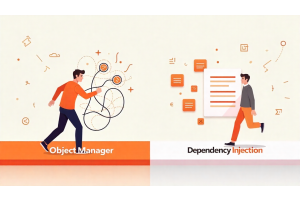Ecommerce Metrics: 13 Essential KPIs to Track for Online Store Success

Ecommerce Metrics: 13 Essential KPIs to Track for Online Store Success
Tracking key ecommerce metrics is crucial for assessing the success of your marketing strategies and measuring business growth.
These essential metrics can significantly impact your total sales, repeat purchases, and overall customer experience.
There are many ecommerce metrics and KPIs (Key Performance Indicators) that marketers can monitor for insights.
To help you grow faster, we’ve outlined the top ecommerce metrics and KPIs you should track, along with how they can boost your online store's performance.
Table Of Content
13 Essential Ecommerce Metrics and KPIs You Should Track
Tracking important ecommerce metrics is essential for evaluating the effectiveness of your marketing strategies and monitoring your business growth. These key metrics can significantly impact total sales, repeat purchases, and overall customer experience.
To help you achieve results faster, we've highlighted the top ecommerce metrics and KPIs you should measure along with their benefits for your online store.
| Metric | Description |
|---|---|
| Average Order Value (AOV) | Measures the average amount spent by customers per order. |
| Shopping Cart Abandonment Rate (CAR) | Indicates the percentage of shoppers who leave without completing their purchase. |
| Customer Acquisition Cost (CAC) | Calculates the cost incurred to acquire a new customer. |
| Return on Investment (ROI) | Assesses the profitability of investments in marketing campaigns. |
| Add-to-Cart Rate | Tracks the percentage of visitors who add items to their shopping cart. |
| Website Traffic | Measures the total number of visitors to your website. |
| Average Session Duration | Indicates the average amount of time users spend on your website. |
| Bounce Rate | Represents the percentage of visitors who leave after viewing only one page. |
| Pay-Per-Click (PPC) | Refers to the cost incurred for each click on paid advertisements. |
| Email Conversion Rate | Measures the percentage of email recipients who take a desired action. |
| Customer Satisfaction Score (CSAT) | Gauges customer satisfaction with your products or services. |
| Customer Lifetime Value (CLV) | Estimates the total revenue a business can expect from a single customer over their lifetime. |
| Customer Retention Rate | Measures the percentage of customers who continue to shop with your business over time. |
These 13 essential metrics are divided into three key categories: sales, marketing, and customer service.
Let’s explore each category to understand these metrics and discover how they can enhance your ecommerce store's performance.
Category 1: Sales Metrics
Monitoring key ecommerce metrics and KPIs for sales is essential. They provide valuable insights that influence various aspects of your business decisions.
What Are the Key Performance Indicators (KPIs) for Ecommerce Sales?
- Average Order Value (AOV)
- Shopping Cart Abandonment Rate (CAR)
- Customer Acquisition Cost (CAC)
- Return on Investment (ROI)
- Add-to-Cart Rate
Average Order Value (AOV)
Average Order Value (AOV) measures the mean amount of money customers spend per transaction on your website. It serves as a critical indicator of sales performance.
Monitoring AOV provides valuable insights into customer purchasing behavior, enabling you to refine pricing strategies and enhance content marketing efforts. A higher AOV often indicates successful upselling or cross-selling initiatives.
To calculate your AOV, use the following formula:
AOV = Total Revenue / Number of Orders
By regularly analyzing AOV, you can identify trends, optimize marketing campaigns, and ultimately boost overall revenue.
Shopping Cart Abandonment Rate (CAR)
The Shopping Cart Abandonment Rate (CAR) represents the percentage of visitors who add items to their shopping carts but do not finalize their purchases.
This crucial eCommerce metric indicates potential issues within your checkout process or user experience. A high CAR may suggest that customers encounter obstacles that prevent them from completing their transactions.
To enhance your sales conversion rate, it's essential to minimize the shopping cart abandonment rate. Streamlining the checkout process, offering guest checkout options, and improving site navigation can significantly help in reducing abandonment rates.
You can calculate CAR using the following formula:
CAR = (Total Number of Completed Transactions / Total Number of Shopping Carts) x 100
Regularly monitoring your CAR allows you to identify areas for improvement, ultimately boosting your eCommerce sales.
Customer Acquisition Cost (CAC)
Customer Acquisition Cost (CAC) is a critical eCommerce metric that reflects the total expenditure incurred to acquire a new customer for your products or services.
Understanding your CAC is vital for assessing the effectiveness of your marketing strategies and determining the overall profitability of your business. A high CAC may indicate inefficiencies in your marketing efforts, while a low CAC suggests effective customer acquisition strategies.
To calculate your CAC, use the following formula:
CAC = Total Marketing Costs / Number of New Customers Acquired
By regularly evaluating your CAC, you can make informed decisions about your marketing budget and strategies, ultimately improving your return on investment.
Return on Investment (ROI)
Return on Investment (ROI) is a key eCommerce metric that measures the effectiveness of your investments, such as advertising budgets, online store tools, or subscription services.
Understanding your ROI is crucial for evaluating the profitability of your business activities. A positive ROI indicates that your investments are generating profits, while a negative ROI suggests that adjustments may be necessary.
To calculate your ROI, use the following formula:
ROI = (Net Profit / Total Investment) x 100
By regularly assessing your ROI, you can make informed decisions about where to allocate resources and optimize your strategies for greater financial returns.
Add-to-Cart Rate
The Add-to-Cart Rate is a critical eCommerce metric that indicates the percentage of visitors who add at least one item to their shopping cart during a session.
Measuring the Add-to-Cart Rate is vital for understanding the effectiveness of your product descriptions, website usability, and marketing efforts. A high add-to-cart rate suggests that your product offerings and website layout resonate well with customers, while a low rate may signal the need for improvements.
You can calculate your Add-to-Cart Rate using the following formula:
Add-to-Cart Rate = (Total number of sessions with at least one item added to the cart / Total number of sessions) x 100
Regularly monitoring this metric helps you optimize your online store's performance and enhance the shopping experience for your customers.
Tip
Looking to take your ecommerce store to the next level? Explore Emmo's robust extensions and elegant themes! Our innovative tools are designed to boost your website's performance and aesthetics, ensuring a seamless shopping experience that helps customers easily discover and purchase your products.
Category #2: Marketing Strategies
Key Ecommerce Metrics for Evaluating Marketing Performance
Website Traffic
Website traffic measures the number of visitors to your online store. Understanding this metric helps you assess the effectiveness of your marketing efforts and attract potential customers.
You can track your website traffic using tools like Google Analytics, Website Checker Tool, and SimilarWeb.
Average Session Duration on Website
Average session duration is a crucial ecommerce metric that indicates the average amount of time a visitor spends on your online store during a single visit.
A longer average session duration suggests that you have engaging content or that your website offers a user-friendly experience.
You can calculate it using the following formula:
Average Session Duration = Total Session Duration / Total Number of Sessions
Bounce Rate
Bounce rate is an important ecommerce metric that measures the percentage of visitors who leave your website after viewing only one page. Generally, a lower bounce rate indicates that users are finding your content engaging and spending more time on your site.
Understanding your bounce rate helps you assess the effectiveness of your landing pages and overall website content in retaining visitors.
You can calculate your bounce rate using the following formula:
Bounce Rate = (Total Number of One-Page Visits / Total Number of Entries to the Website) x 100
Pay-Per-Click (PPC)
Pay-Per-Click (PPC) is a crucial ecommerce metric that measures the cost incurred each time a user clicks on your online ads. This metric is essential for evaluating the effectiveness of your advertising campaigns on social media and search engines.
Tracking your PPC helps you understand your advertising expenses and optimize your marketing budget for better returns.
You can calculate your PPC using the following formula:
PPC = Total Advertising Cost / Total Number of Ads Clicked
Email List Conversion Rate
The Email List Conversion Rate is a vital metric for assessing the effectiveness of your email marketing efforts in fostering brand growth. By offering an email opt-in for first-time visitors, you can convert them into loyal subscribers. Following that, sending personalized and valuable email campaigns helps build trust and engagement with your audience.
To calculate your Email List Conversion Rate, use the following formula:
Email List Conversion Rate = ((Total Number of New Subscribers - Number of Unsubscribes) / Total Number of Subscribers) x 100
Category #3: Customer Service
Monitoring customer service quality is essential for any eCommerce business. The following metrics and KPIs provide insights into how well you are meeting your customers' needs:
Customer Satisfaction Score (CSAT)
The Customer Satisfaction Score (CSAT) measures how pleased customers are with your products and services based on their feedback in surveys. A higher CSAT indicates that your customers are happy and more likely to return.
To calculate your CSAT, use this formula:
CSAT = (Sum of All Customer Satisfaction Scores / Total Number of Survey Respondents) x 100
This metric helps you identify areas for improvement and enhance the overall customer experience.
Customer Lifetime Value (CLV)
Customer Lifetime Value (CLV) is a crucial metric that reflects the total revenue a customer generates for your business throughout their relationship with you. Understanding CLV helps you make informed decisions about marketing strategies and customer retention efforts.
To calculate your CLV, use the following formula:
CLV = (Average Order Value) x (Average Number of Purchases per Year) x (Average Customer Lifespan in Years)
By calculating CLV, you can better allocate resources to acquire and retain valuable customers.
Customer Retention Rate
The Customer Retention Rate is a vital metric that measures the percentage of customers who continue to do business with your company over a specific timeframe. A high retention rate indicates strong customer loyalty and effective customer service.
To calculate your Customer Retention Rate, use the following formula:
Customer Retention Rate = (Total Number of Customers at End of Period - Number of New Customers Acquired During Period) / Total Number of Customers at Start of Period × 100
Monitoring this metric can help you identify areas for improvement in customer satisfaction and enhance your overall service strategies.
Conclusion: Mastering Ecommerce Metrics for Optimal Performance
Understanding and leveraging key ecommerce metrics is essential for enhancing conversion rates and enriching the user experience for both current and potential customers.
The key takeaway is to actively monitor your ecommerce metrics to identify areas that need improvement.
Whether you're refining your marketing strategies or optimizing product pages, this guide provides insights into the most impactful ecommerce metrics to help you achieve your business goals.
Create a user-friendly website designed to effectively analyze essential ecommerce metrics and KPIs for optimal business performance.
Ecommerce Metrics Content FAQs
What are ecommerce metrics and why are they important?
Ecommerce metrics are quantitative measures that help evaluate the effectiveness of marketing strategies, monitor business growth, and assess customer experience. They provide valuable insights that can significantly impact sales and repeat purchases.
What is Average Order Value (AOV)?
AOV measures the average amount spent by customers per order on your website. It is a critical indicator of sales performance and helps identify customer purchasing behavior.
How is the Shopping Cart Abandonment Rate (CAR) calculated?
CAR is calculated using the formula: CAR = (Total Number of Completed Transactions / Total Number of Shopping Carts) x 100. It indicates the percentage of visitors who add items to their carts but do not complete the purchase.
What does Customer Acquisition Cost (CAC) represent?
CAC reflects the total expenditure incurred to acquire a new customer. Understanding CAC is vital for assessing marketing effectiveness and determining business profitability.
Why is Return on Investment (ROI) important in ecommerce?
ROI measures the profitability of investments made in marketing campaigns, tools, or services. A positive ROI indicates successful investments, while a negative ROI suggests the need for adjustments.
What is the significance of the Bounce Rate in ecommerce?
Bounce Rate measures the percentage of visitors who leave your website after viewing only one page. A lower bounce rate indicates that users find your content engaging, while a higher rate may highlight areas needing improvement.
How can I calculate Customer Lifetime Value (CLV)?
CLV is calculated using the formula: CLV = Average Order Value x Average Number of Purchases per Year x Average Customer Lifespan in Years. This metric helps determine the total revenue a customer generates over their relationship with your business.
What does the Email Conversion Rate measure?
The Email Conversion Rate measures the effectiveness of your email marketing efforts by indicating the percentage of email recipients who take a desired action, such as making a purchase.
How can I improve my Add-to-Cart Rate?
To enhance your Add-to-Cart Rate, ensure your product descriptions are clear and engaging, optimize website usability, and streamline navigation to encourage more visitors to add items to their carts.
What strategies can I implement to reduce the Shopping Cart Abandonment Rate (CAR)?
You can minimize CAR by simplifying the checkout process, offering guest checkout options, providing clear shipping information, and ensuring a user-friendly website experience to keep customers engaged throughout their shopping journey.




